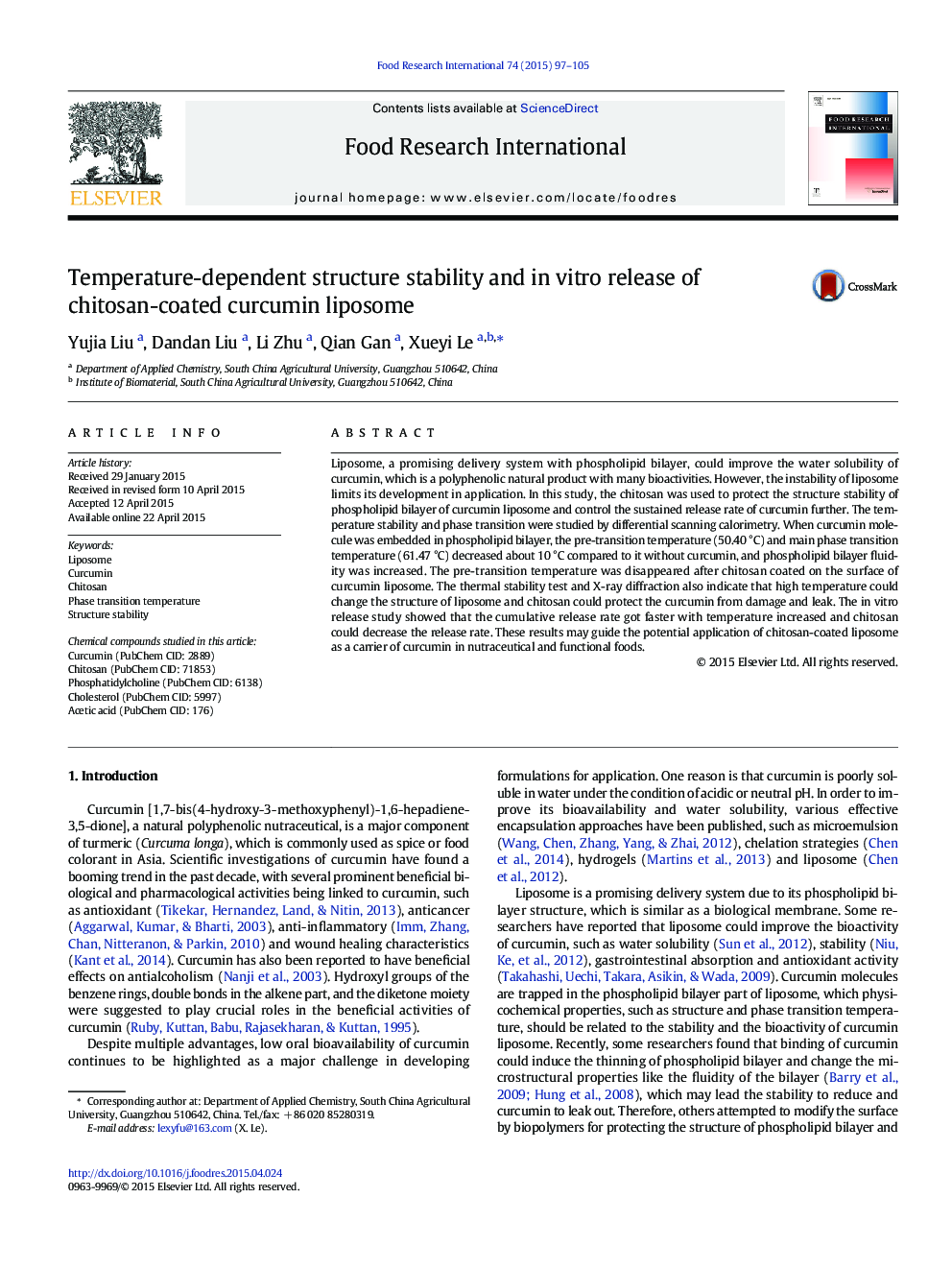| Article ID | Journal | Published Year | Pages | File Type |
|---|---|---|---|---|
| 4561410 | Food Research International | 2015 | 9 Pages |
•Highly stability curcumin liposome was prepared with coating chitosan.•The phase transition of phospholipid bilayer was discussed based on temperature.•The protective effect of chitosan on liposome structure was studied.•Chitosan decreases the release rate of curcumin and release mechanism was proposed.
Liposome, a promising delivery system with phospholipid bilayer, could improve the water solubility of curcumin, which is a polyphenolic natural product with many bioactivities. However, the instability of liposome limits its development in application. In this study, the chitosan was used to protect the structure stability of phospholipid bilayer of curcumin liposome and control the sustained release rate of curcumin further. The temperature stability and phase transition were studied by differential scanning calorimetry. When curcumin molecule was embedded in phospholipid bilayer, the pre-transition temperature (50.40 °C) and main phase transition temperature (61.47 °C) decreased about 10 °C compared to it without curcumin, and phospholipid bilayer fluidity was increased. The pre-transition temperature was disappeared after chitosan coated on the surface of curcumin liposome. The thermal stability test and X-ray diffraction also indicate that high temperature could change the structure of liposome and chitosan could protect the curcumin from damage and leak. The in vitro release study showed that the cumulative release rate got faster with temperature increased and chitosan could decrease the release rate. These results may guide the potential application of chitosan-coated liposome as a carrier of curcumin in nutraceutical and functional foods.
